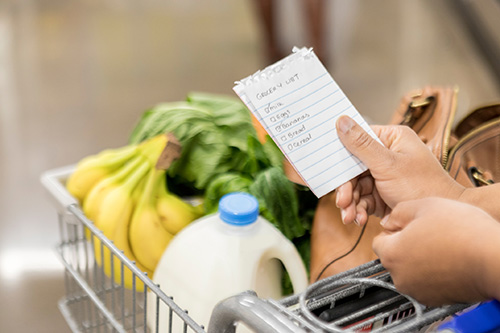People with heart disease experience high food insecurity rates

People with atherosclerosis, particularly those with a low income and other socioeconomic disadvantages, are more likely to experience food insecurity than those without hardening of the arteries, according to recent research.
Researchers analyzed several socioeconomic factors from self-reported data for 190,113 U.S. adults. Among the 18,442 (8.2%) adults with atherosclerosis, about 1 in 7 – or 14.6% – reported food insecurity. That was compared with 9.1% among those without atherosclerosis.
The findings also showed food insecurity affects nearly 1 in 2 people with the condition who also are among the most disadvantaged socioeconomic groups.
In 2018, nearly 11% – 14.3 million – U.S. households were food insecure, a term the U.S. Department of Agriculture defines as "limited or uncertain access to adequate food due to lack of money" at least some time during the year.
The recent findings were presented in November 2020 at the American Heart Association's virtual Scientific Sessions. They are considered preliminary until published in a peer-reviewed journal.
The numbers were significantly higher for people younger than 65, women, Hispanic and non-Hispanic Black people, and those who were divorced, separated, widowed or had private insurance or no insurance, which were considered to be the "high-risk characteristics" for food insecurity in the study.
Those who listed themselves as "poor/low income" were nearly five times more likely to experience food insecurity. Among people with five or more "high-risk characteristics," 44.1% reported food insecurity and had 23 times higher odds of being food insecure compared to those with one or no characteristics.
"We expected certain populations to have higher burden of food insecurity, but these numbers are extremely high. They're very surprising to us," said Dr. Gowtham Grandhi, one of the researchers and an internal medicine resident at MedStar Health in Baltimore.
Leaving atherosclerosis unchecked could be dangerous. The fatty plaque may partially or totally block blood flow through large- or medium-sized arteries in the heart and brain, leading to a heart attack or stroke. Treatments for the condition can include medication to prevent clot formation and to control risk factors, surgery or lifestyle changes such as heart-healthy eating, weight management, exercise and quitting smoking.
The research didn't look into reasons why the difference was so drastic but lead researcher Shiwani Mahajan said one possibility for higher rates of food insecurity among low-income people is the never-ending cycle of poor health and a lack of money.
"Individuals with cardiovascular disease have even higher health care costs, including medication costs, so they have to choose what to prioritize," said Mahajan, a postdoctoral associate at Yale School of Medicine in New Haven, Connecticut.
She said it's essential for people to be able to afford medications and still be able to eat a balanced diet. Federal nutrition programs, sometimes called "food stamps," are critical for people with food insecurity, the study said. A previous study commissioned by the USDA found the Supplemental Nutrition Assistance Program (SNAP) reduced the likelihood of being food insecure by about 30%.
"The findings are an important reminder that social determinants of health are perhaps just as important, in terms of cardiovascular outcomes, as actual risk factors," said Dr. Arshed Quyyumi, who was not involved in the study.
Quyyumi, a cardiologist and director of the Emory Clinical Cardiovascular Research Institute at Emory University in Atlanta, called the research "a work in progress" and said future studies are needed that track how many of the participants develop cardiovascular disease.





